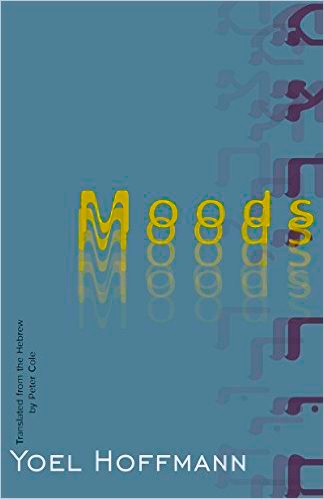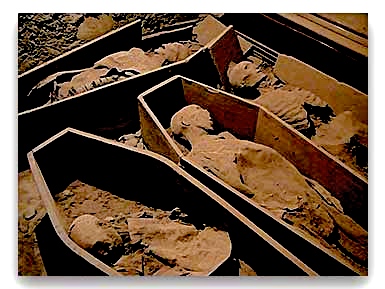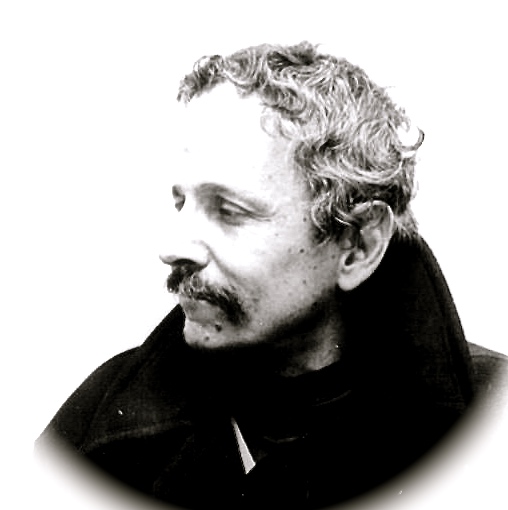Note: Hoffmann was WINNER of the first ever Koret Jewish Book Award, WINNER of the Bialik Prize by the city of Tel Aviv, and WINNER of the Prime Minister’s Prize.
“Ever since finishing my last book, I’ve been thinking of how to begin the next one. Beginning is everything and needs to contain, like the seed of a tree, the work as a whole. And so, what I see is the figure of a man descending (from the sidewalk?) five or six steps to a basement apartment, and he’s halfway there. I know it’s a love story. And maybe there’s a woman in the basement apartment. It’s probably November.” –from Moods, Section [1]
 As Israeli author Yoel Hoffmann begins his wild metafictional, and often metaphysical, tale, he invites the reader along with him as he experiments with his format, lets his mind wander from one idea to the next, remembers the past and the people in it, thinks about God (or not) and death, and creates a tale that is both serious and full of fun at the same time – not a description which can be applied to many other novels these days. As the author himself says, later in the book, “At first glance this book would seem to be a hybrid. That is, a book that sometimes laughs and sometimes cries. But in fact (as logicians say), it’s laughing and crying at once, and to the same degree.” The book challenges the very nature of genre, emphasizing that all books are stories, just as life is, and the best way to distinguish between them is to classify them by their feelings – happy or sad, “a book that can laugh or smile or cry. The book itself. The reader can behave however he likes.”
As Israeli author Yoel Hoffmann begins his wild metafictional, and often metaphysical, tale, he invites the reader along with him as he experiments with his format, lets his mind wander from one idea to the next, remembers the past and the people in it, thinks about God (or not) and death, and creates a tale that is both serious and full of fun at the same time – not a description which can be applied to many other novels these days. As the author himself says, later in the book, “At first glance this book would seem to be a hybrid. That is, a book that sometimes laughs and sometimes cries. But in fact (as logicians say), it’s laughing and crying at once, and to the same degree.” The book challenges the very nature of genre, emphasizing that all books are stories, just as life is, and the best way to distinguish between them is to classify them by their feelings – happy or sad, “a book that can laugh or smile or cry. The book itself. The reader can behave however he likes.”
Filled with a wildly imaginative and an unusually personal style, the book rejects the convention of using page numbers, dividing the writing into half-page sections instead, numbering them so that the reader can find his way around, and creating a sense of order and progress, though the content within the sections can vary widely. Immediately after introducing the book with the highlighted Section [1] at the beginning of this review, for example, Hoffmann launches into Section [2], which talks about his experience in an empty building in Ramat Gan in the fifties. “In that empty building a woman who’s now seventy-four (if she’s not dead) took off her dress.” He tells us in Section [3] that the man’s name was Nehemiah and the woman’s, Hermione, and, in the next sentence, he suddenly informs us that after his father died he “spritzed his deodorant into my armpits for three or four months.”
Having introduced the ideas of love and death and family, however briefly in the first two pages, he now volunteers in the next sentence that his father “had a Schaffhausen watch, which wasn’t removed even when he fell into a coma,” further developing the idea of time’s passage, the connections between fathers and sons, and the idea of illness and unconsciousness. Within a mere three hundred fifty words, the author has done what he has promised to do in the second sentence of his novel: He has created a beginning which, “like the seed of a tree, [contains] the work as a whole.” The “novel” branches into memoir within the same two pages as the author tells the reader that he, too once “went down steps to a place where a French woman waited” and that maybe he’ll continue the story with his own memories, emphasizing that “Bookstores hold an infinite number of memories like these, but only a few speak in praise of whores.”
Through flashbacks, Hoffmann recreates his own life, imagines new lives, and returns to the image of his father wearing his Schaffhausen watch, emphasizing that the men who created this watch are now either dead or very old and that their wives are also dead, and he asks the reader to “picture the wife of a watchmaker. How she places a bowl of beets on the table,” as opposed to people like Van Gogh’s “Potato Eaters” whom he has mentioned in an earlier section in which he refers to the potatoes at the Austrian old age home in Ramat Gan. He would like to bring back Aunt Edith so that she can be amazed by the elegant Azrieli skyscrapers in Tel Aviv which have been created since her death.

Mummies at St. Michan’s Church. Their bodies have remained relatively intact and have not decayed because of the gases emitted by the soil in the crypt of the church. The body in the top left is that of the crusader mentioned here.
References to other writers and their work, and to other cultures, reflect the author’s own background and work as a professor of Japanese poetry, Buddhism, and philosophy at a university in Israel. He contemplates concepts of beauty and the reality of death – and wonders about the souls of dogs. He has an unusual preoccupation with the life of Christ and the crucifixion, with love and hate, and with psychology and psychoanalysis, admitting that he would go down into “the world of the dead if only [he] could meet William Saroyan.” He is intrigued with the “dead who remain on the surface of the earth,” like the mummies in the crypt of St. Michan’s Church in Dublin, whose flesh is preserved by the combination of elements oozing from the earthen walls and floor. He imagines the lives of these dead people, including a crusader so tall that his feet had to be cut off so he could fit into a casket, and he contemplates the miracles which sometimes accompany death.

Candles float in paper boats to celebrate the lives of family members at a festival of remembrance in Japan.
About halfway through this novel, the author thinks about changing to a more contemporary, sexier story which he believes his readers might like better than what he has written so far. He says he would like to do something “godlike” and create a person, or take a train ride to Bulgaria, and he admits that he loves his Great Pyrenees dog because he “never has anything critical to say about us.” He talks about the lies that writers perpetrate and says that the worst crime of writers is that of inflicting boredom, for which people could be thrown into prison, but, he admits, that “that’s better than sitting in Tel Aviv at fancy stores like the Bookworm.” The passage of time is remembered poignantly with his memory of the thousands of candles which the Japanese float in paper boats at a festival on Lake Biwa, each candle representing the soul of a family ancestor, and, he says, as the candles burn down and the paper boats sink, the personal experience cannot be described.
Music, and dreams, and poetry, and parallel languages also gain attention from an author so alive and so full of ideas that anyone who chooses to read this marvelous book will be powerfully affected. Ultimately, however, Hoffmann believes that all he can really offer his readers is a kind of emptiness, which they may be able to assuage, in part, with a buy-one-get-one free prize offer, along with a beautiful tale. He admits, in closing, that feels especially sorry for God, who must deal with perpetual loneliness.
ALSO by Hoffmann: THE SHUNRA (CAT) AND THE SCHMETTERLING (BUTTERFLY)
Photos, in order: The author’s photo appears on /http://www.ndbooks.com/
The Schaffhausen watch, now sixty years old, is now a “vintage” watch, found here: http://www.vintagewatch.ca/
The modern Azraeli Center in Tel Aviv is consists of two of the tallest buildings in Israel: https://en.wikipedia.org
The crypt of mummies in the basement of St. Michan’s Church is reachable down a narrow staircase entered from the outside of the church. The qualities of the soil and the gases the crypt emits have preserved these ancient bodies so that little to no decay has occurred. When Mr. Whipple and I were there ten years ago, it was possible to stroke the hand of the crusader for luck. We passed on that opportunity. http://www.chooseireland.com
Paper lanterns float with candles at a festival in Japan, in which each candle represents the soul of a deceased family member. http://gocamperjapan.com/
ARC: New Directions



